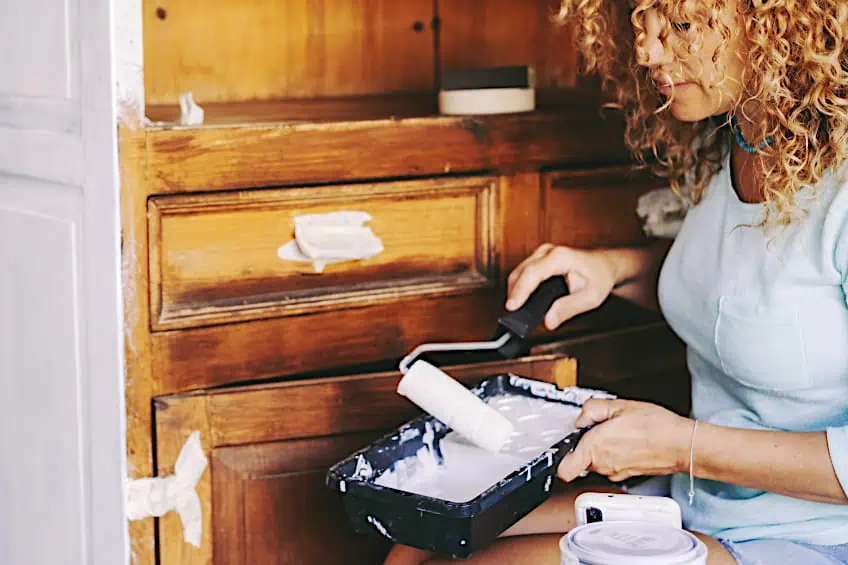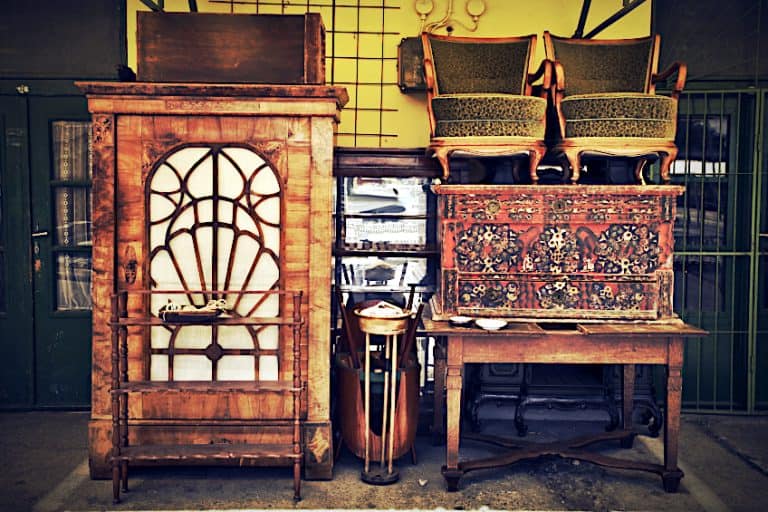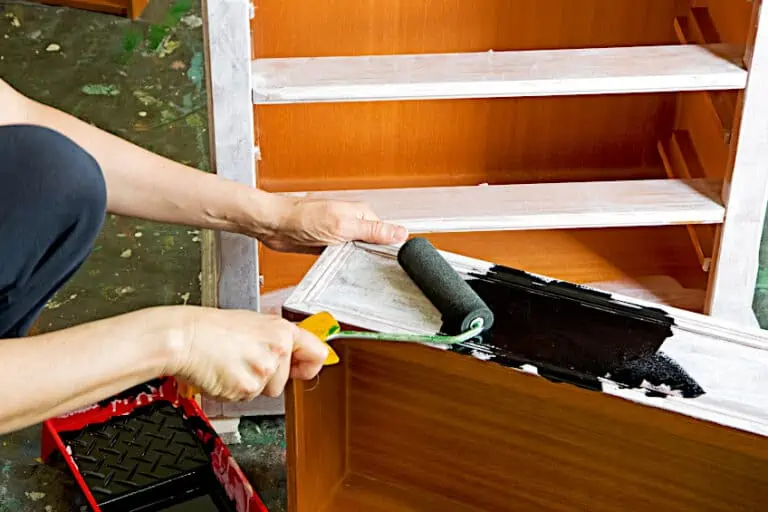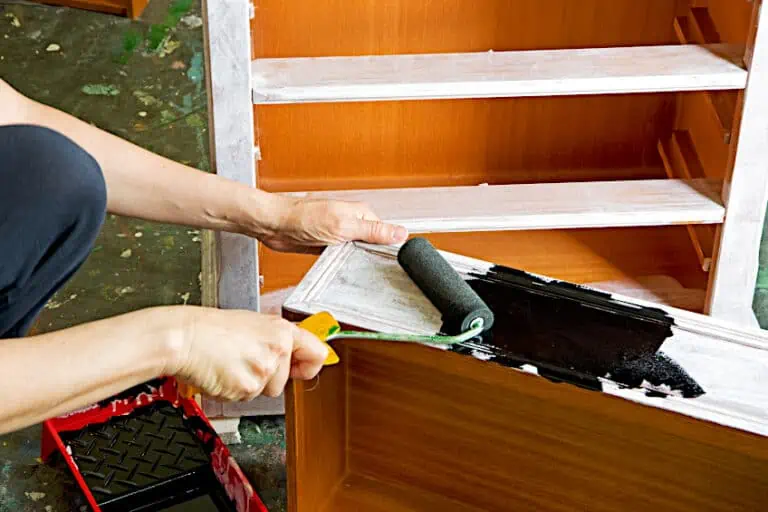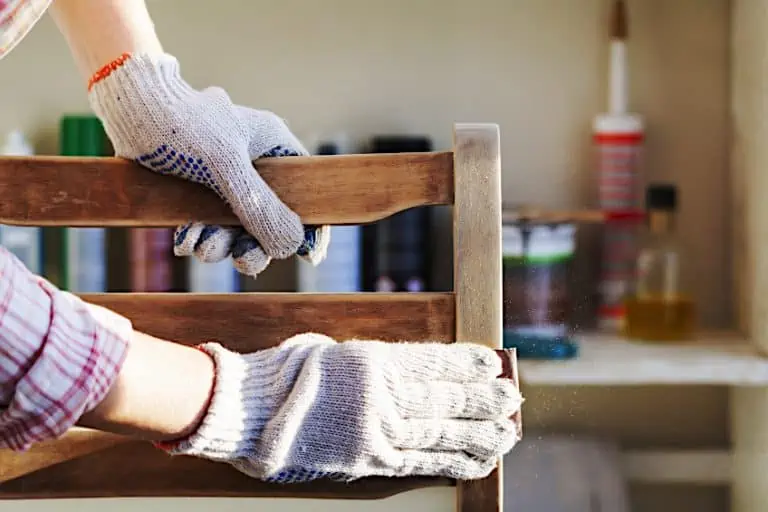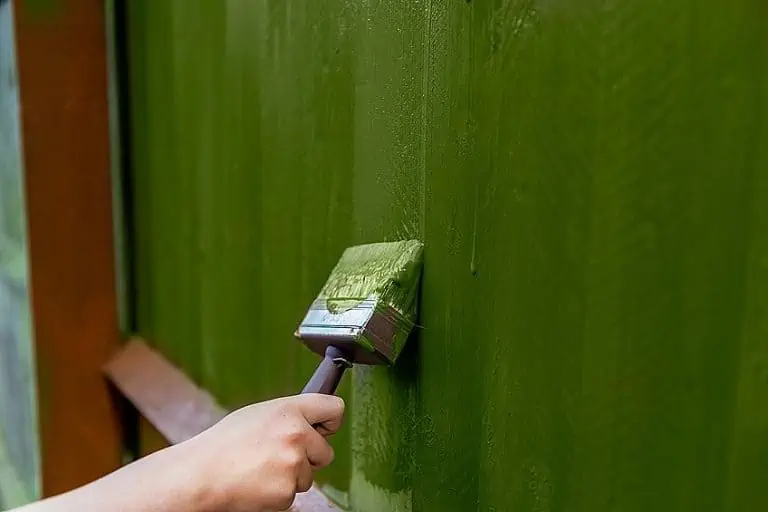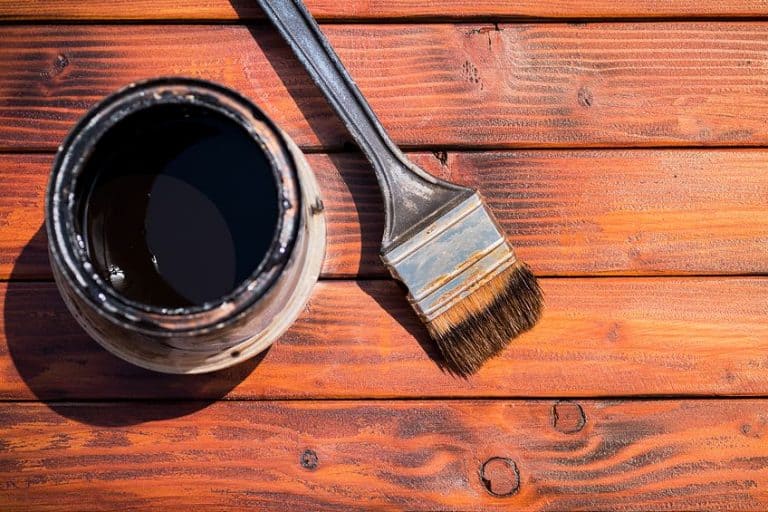Painting Over Varnished Wood – Which Paints to Use on Sealants
We have all, at one time or another, wanted to change the color of an old piece of furniture. The majority of old pieces of furniture or good quality furniture have a sealing or topcoat of varnish on them. So, if you have decided to alter the color of your piece, you may wonder, “Can you paint over varnish or other protective coatings?” We have put together this article to aid you in painting over varnished wood.
Table of Contents
- 1 Can You Paint Over Varnish?
- 2 What Paint Is Best for Painting Over Varnished Wood?
- 3 How to Paint Varnished Wood
- 4 Frequently Asked Questions
Can You Paint Over Varnish?
Refurbishing or restoring your old furniture will cost you a lot less than buying new furniture. However, applying paint over varnished wood may seem like a simple task, but it is one of the most challenging paint jobs you can do and may take a significant amount of time and effort. There is nothing worse than after spending a significant amount of money and working hard, discovering that your newly painted piece of furniture has begun peeling.
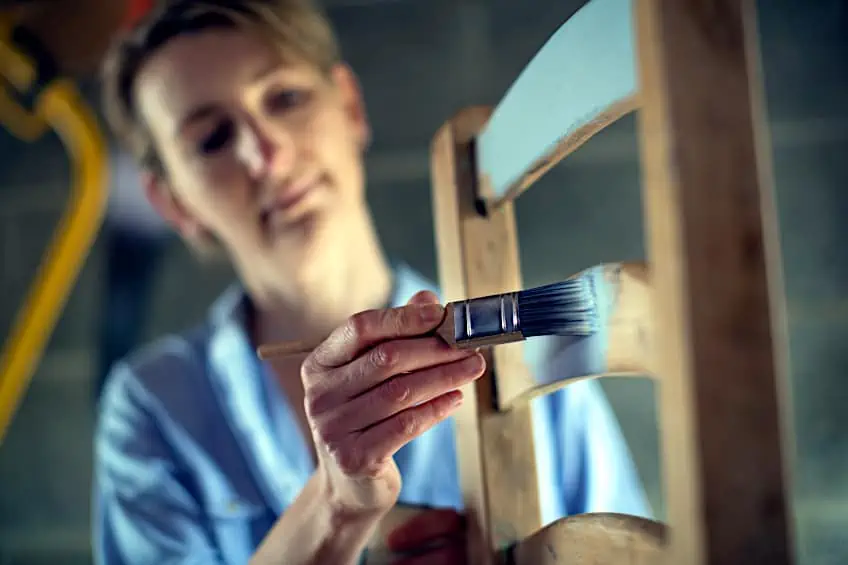
Yes, you can paint over varnish. The varnish could be on an assortment of items, from cupboards to furniture, to trims and staircases, and so much more. However, you will need to use the proper painting methods, and the correct materials. The main aim is to ensure the adhesion of the paint to the surface is durable, whatever the type of paint. Another relevant factor to consider is the state that the varnish is in and the overall state of the wood. Both need to be in a good condition before you begin doing anything. We will look at these conditions in further detail.
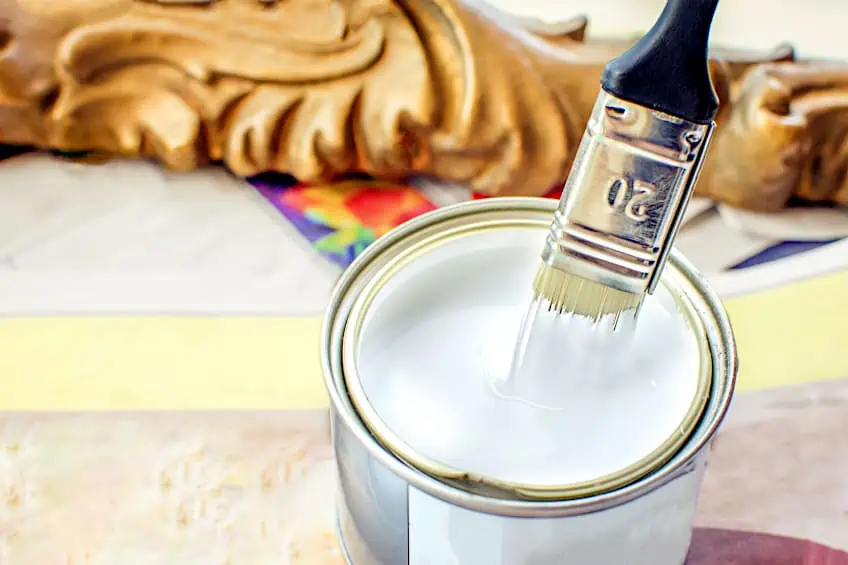
You must assess the condition of both the wood and varnish. The success of your paint job is greatly impacted by the state of the wooden surface and the varnish on the wood. Make sure that you have a secure strong bond that will enhance the adhesion of the paint.
- If the wooden surface you will be painting has been looked after properly and does not have any peeling paint, scratches, gouges, or marks. Then your paint process will be easy.
- If you are dealing with a wooden surface that has been neglected slightly and there are a few scratch marks and gouges, then the painting process will require some extra attention. The surface will have to be properly sanded and all the gouges and scratches will need to be filled with wood filler, and then you will be able to follow the same process mentioned above.
- If the wooden surface you are dealing with is damaged badly with the varnish peeling away, you may then have to use some paint stripper to assist you.
What Paint Is Best for Painting Over Varnished Wood?
Most paints are either oil-based or water-based, and both types can be applied over varnished wood. You can use any paint you prefer, but you must treat and prepare the surface correctly before you begin or your new paint job will fail and quickly deteriorate.
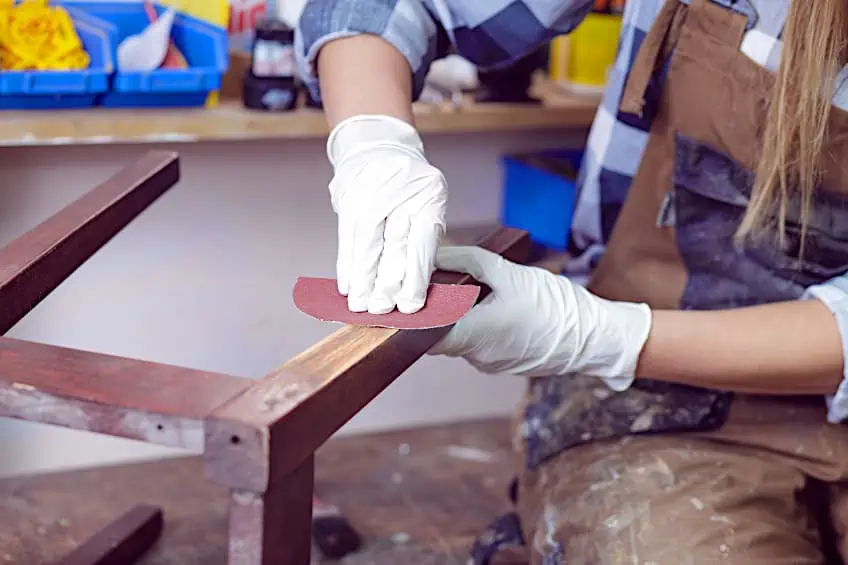
A surface that is damaged will not allow the paint to adhere adequately. Sadly, the paint will begin to chip and peel off. Another problem you may come across when painting over varnished wood is tannins. An example of tannins is when a wood like oak bleeds through paint, creating an ugly blotchy finish.
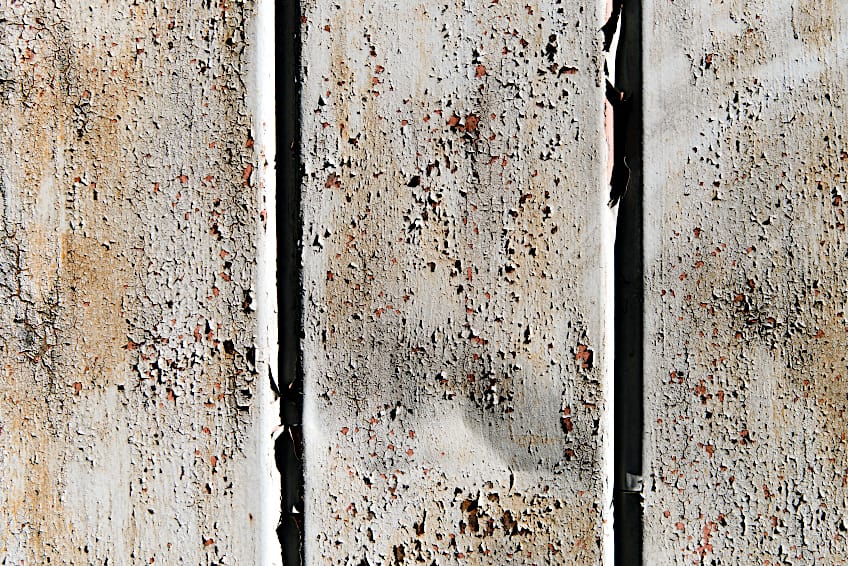
Water-Based Paint
Water-based paint, which is acrylic or latex, is the easiest option when painting over varnish, provided you prepare and prime the surface properly. Water-based paints tend to be quite simple to use and dry very quickly. You can use an oil-based primer, even if you are working with water-based paint, as the two products will work together.
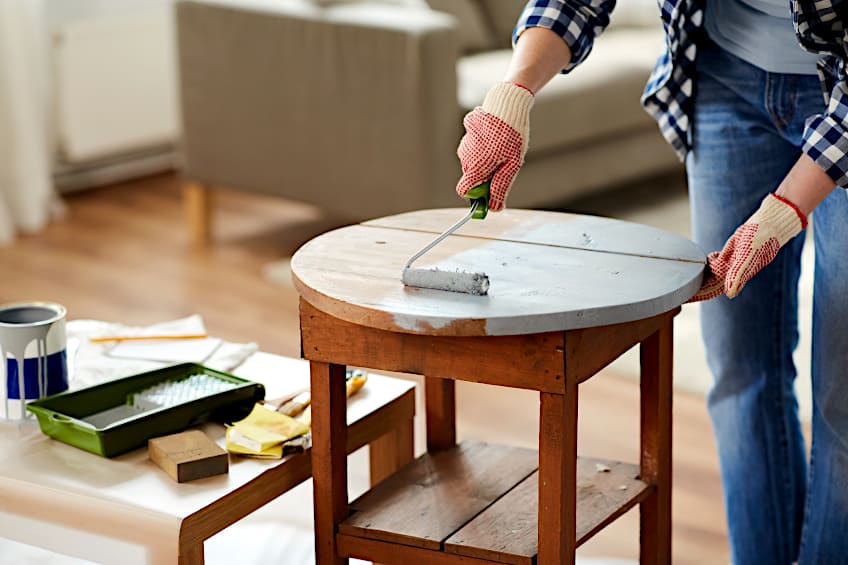
Latex paint is available in three finishes: flat, satin, and gloss (semi-gloss and high-gloss). You will need to do any preparation before you can begin painting. You can then apply the primer and only once this has been done are you able to apply the paint.
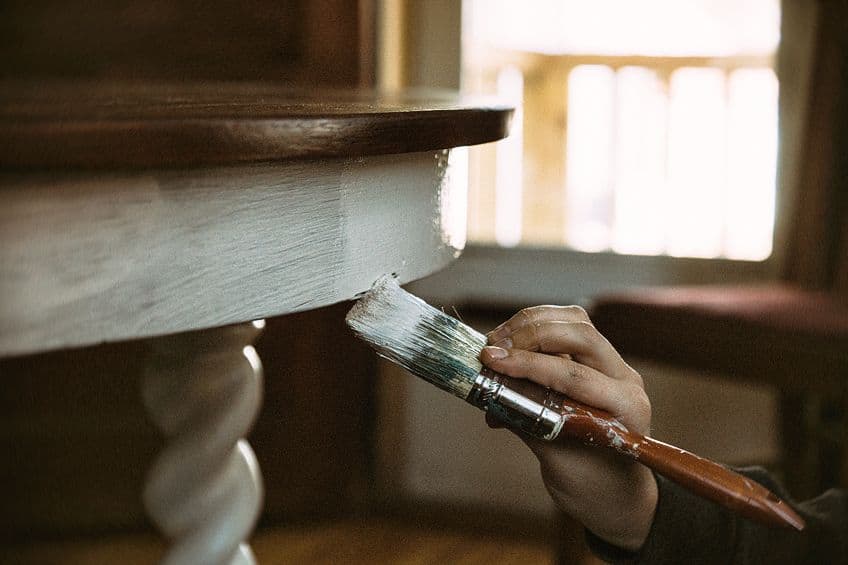
Water-based paint is easy to clean up when done, as all you will require is some soap and water. The paint is also really easy to find, thanks to being available in the majority of hardware stores, and it comes in a wide range of colors.
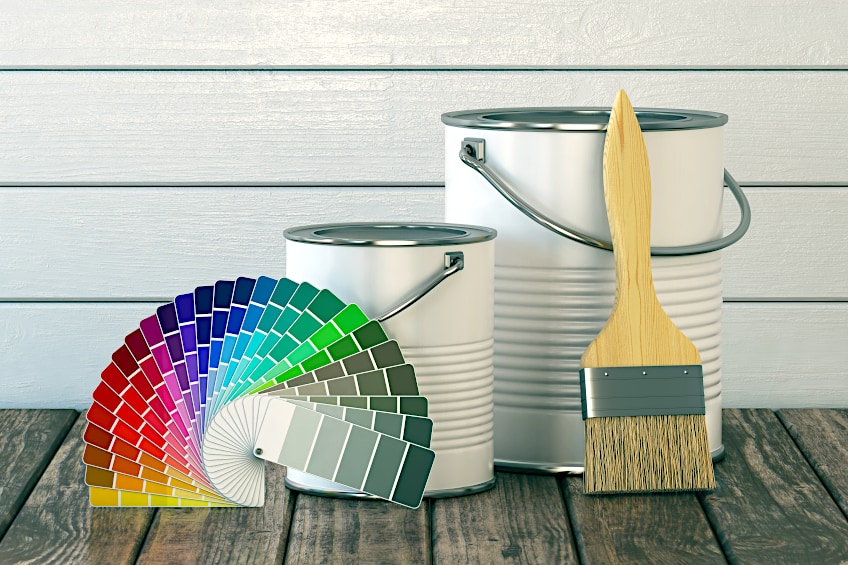
Unfortunately, latex paint does not adhere very well to the wood’s surface and may be prone to chipping and scratching. The paint also does not stand up well to heavy use and you may find you need to do a few touch-ups from time to time. You can, however, use a sealant to protect the surface.
Oil-Based Paint
Oil-based paint (also referred to as alkyd paint), works very well when applied over a varnished wooden surface. The paint is also a great option if you are dealing with exterior wooden surfaces like outdoor wooden furniture and decks, thanks to it being durable and capable of standing up to rough use. Unlike latex paint, the oil-based paint will not scratch or chip as easily.

We must note that oil-based paint can be challenging to work with, and contains a significant number of volatile organic compounds (VOCs). When working with oil-based paints you need to ensure you are wearing the necessary protective gear and that you have a good ventilation system. It will prove difficult to apply oil-based paints using a roller, so we recommend you use a paintbrush. Oil-based paint has a longer drying time, up to 24 hours, which will of course impact your working time. However, oil-based paint will provide you with a bold, colorful finish and you will not have to use a topcoat or a sealant.
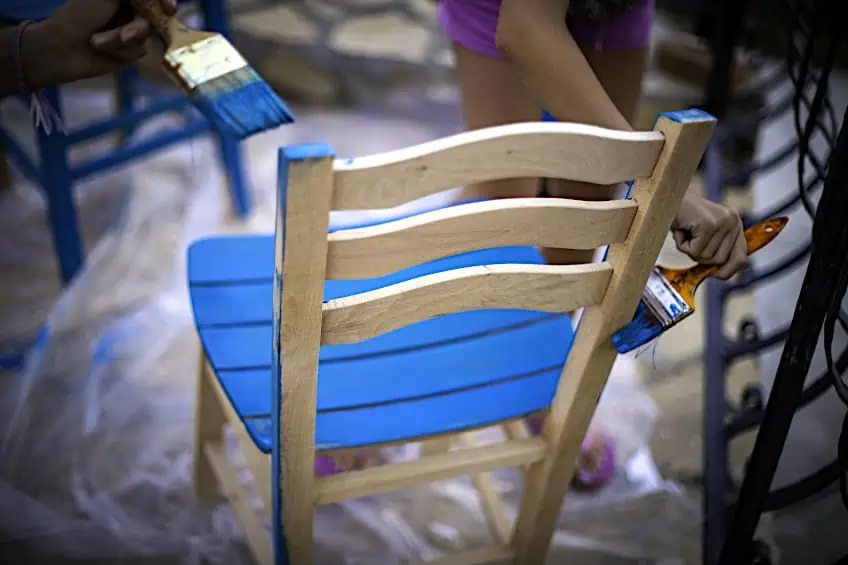
While the paint provides you with a durable finish, it is quite pricey and oil-based paints cost significantly more than water-based paints. Oil-based paint will adhere with ease to the surface and is self-leveling, which means it can be applied to practically any surface without too much drama. As with any paint, you will need to prepare the surface correctly. Preparing the surface entails sanding down the surface and then applying an oil-based primer for varnished wood.
Chalk Paint
Chalk paint is a stunning option to use to paint over varnished wood. It does an amazing job of hiding an assortment of imperfections that show on your varnished wooden surface. However, not many people are fans of chalk paint due to the trendy, vintage ultra-matte finish that it leaves.
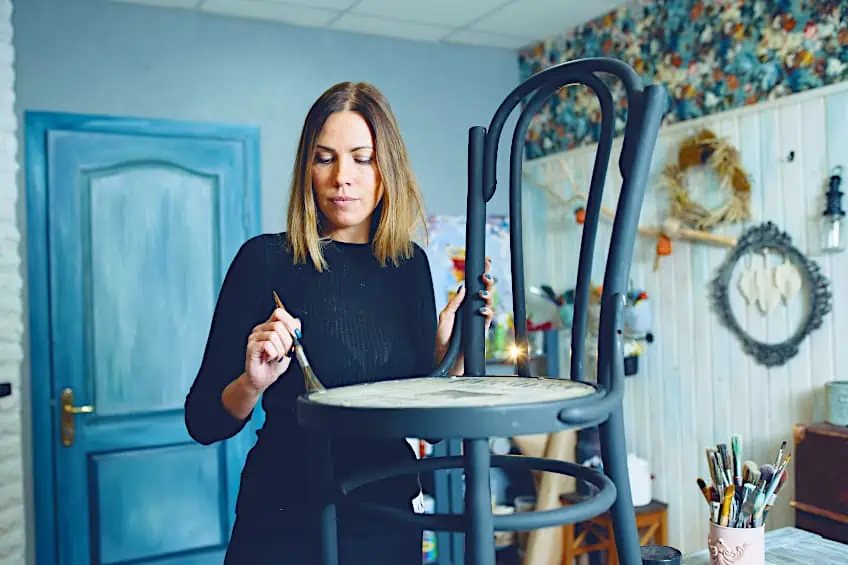
You will not have to apply any primer before applying the chalk paint, but it will be necessary to apply a sealant or topcoat to protect the pain. Alternatively, you may want to use polyurethane if the piece that you have painted comes into contact with water or food daily.
If it is your first-time applying chalk paint, it can prove to be challenging, but it adheres to the majority of surfaces, dries quickly, and leaves you with a silky-smooth finish. If you are to do any touch-ups once the paint has dried, the brush strokes will be very visible. Chalk paint is expensive, and even costs more than latex paint, so some people have rather made their chalk paint. We have put together a table that defines the three types of paint and if they can be used to paint over varnished wooden surfaces.
| Type of Paint | Paint Over Varnished Wood | Remarks |
| Water-Based Paint | ✔ | Can be applied to paint over varnished wood, but the relevant preparations need to be done to the surface. It needs to be sanded down and primed before applying the paint. |
| Oil-Based Paint | ✔ | Can be applied to paint over varnished wood, but the relevant preparations need to be done to the surface, it needs to be sanded down, and primed before applying the paint. |
| Chalk Paint | ✔ | Can be applied to paint over varnished wood, but we strongly suggest that you sand down the surface before applying the paint. |
| Watercolor Paint | ✘ | Should not be applied over varnished wood. The paint will not be absorbed into the wood |
How to Paint Varnished Wood
The condition of the varnished wood will determine the form of painting that will be required to successfully paint over varnished wood. We have put together a tutorial to assist you with the process of how to paint varnished wood, to ensure adequate results.
Complete Process for Painting Over Varnished Wood
You would follow this process when the varnish on the wooden surface has been severely damaged, resulting in gouges, marks, scratches, and varnish peeling off. You will have to ensure that all the varnish is removed from the wooden surface so that you are left with a practically bare wooden surface.
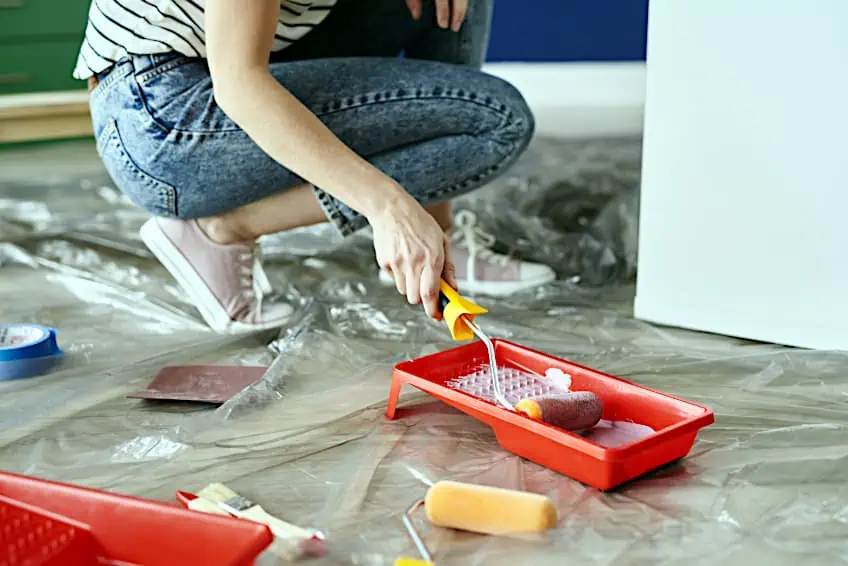
Supplies and Tools You Will Need
Before you begin your refurbishment job, you will need to ensure that you have all the relevant supplies and tools at hand. You will save yourself a lot of time not having to hunt down the items while you are busy with the process.
- Plastic protective sheets
- Household cleaner or detergent
- Paint remover
- Lint-free rag or tack cloth
- Wood filler
- Medium- to fine-grit sandpaper
- Choice of paint
- Safety eyewear, mask, and gloves
- Paint roller, paintbrush, or a paint sprayer
- The correct type of primer for varnished wood
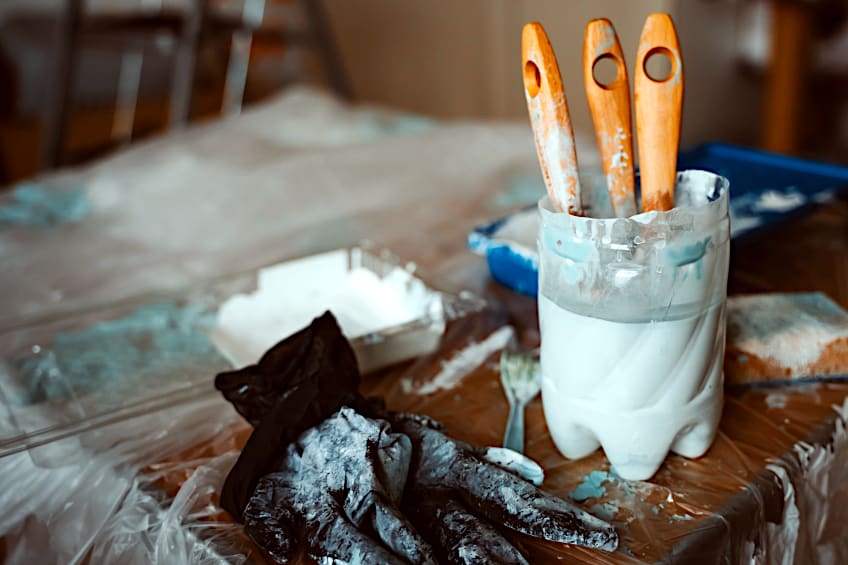
Clean the Old Varnished Wood Surface
You will need to clean down the wooden surface before you can move on to the next step to ensure that any grease and dust have been removed and it will not mix with the primer or the paint. This may feel like an unimportant step, but if you want to achieve good results, it is an imperative step.
- Spray on some household cleaner to the wooden surface and using a clean cloth wipe away all the dirt and grime. Keep in mind that varnish is not water-proof, so work efficiently as the varnish could potentially react to moisture.
- If there are any stubborn stains or spots you can use some Trisodium Phosphate (TSP) to remove them.
- Once the surface has been wiped clean, allow time for it to dry completely.
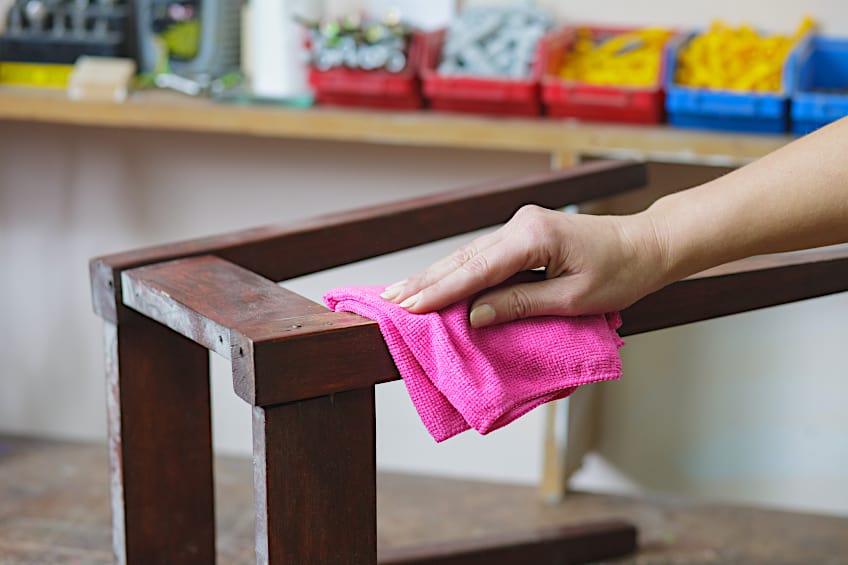
Repair Surface Defects
You will be able to adequately access the quality of the wood, once it has been cleaned off. You will then be able to determine if the surface is smooth enough or if there are any gouges, dents, or bad scratches. If there are any types of imperfections on the wooden surface, these need to be dealt with before you apply any paint. This is because the paint will not sufficiently cover up any imperfections and will result in the paint blistering or peeling. Any visible imperfections can be filled using wood filler.
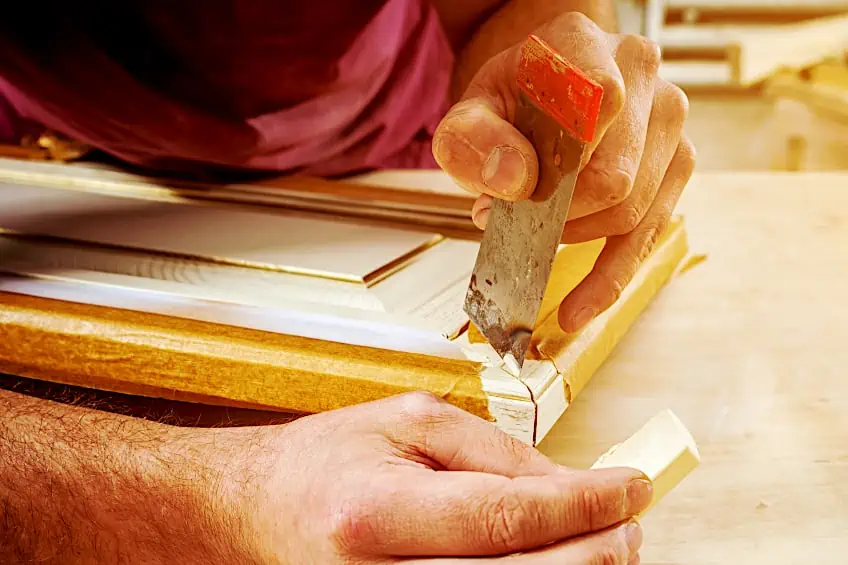
Strip or Remove the Varnish
Nobody wants to spend their time and energy sanding but if you are working with a varnished surface that is not in a great condition then you will have to sand off the varnish. Sanding causes dust to be released into the air, before you begin sanding you will need to ensure that the space you are working in has adequate ventilation, so put on the fan and open all the windows and doors. You will need to protect your lungs and eyes so you will have to wear a respirator or a mask and some safety goggles.
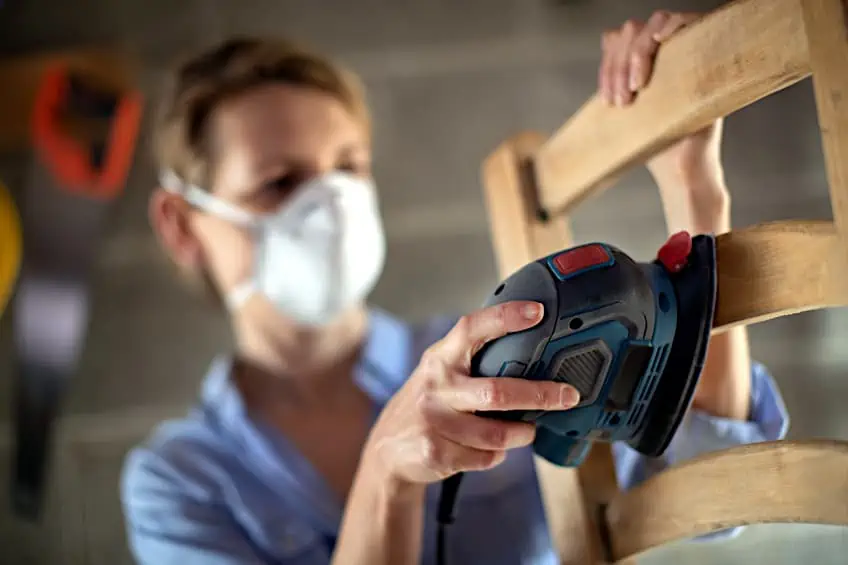
The sandpaper needs to have a medium to fine grit sandpaper of 120 to 220 grit. This type of sandpaper will provide you with the texture you require for the paint to adequately adhere to a varnished surface. Sand down the wood, working in the same direction as the wood’s grain.
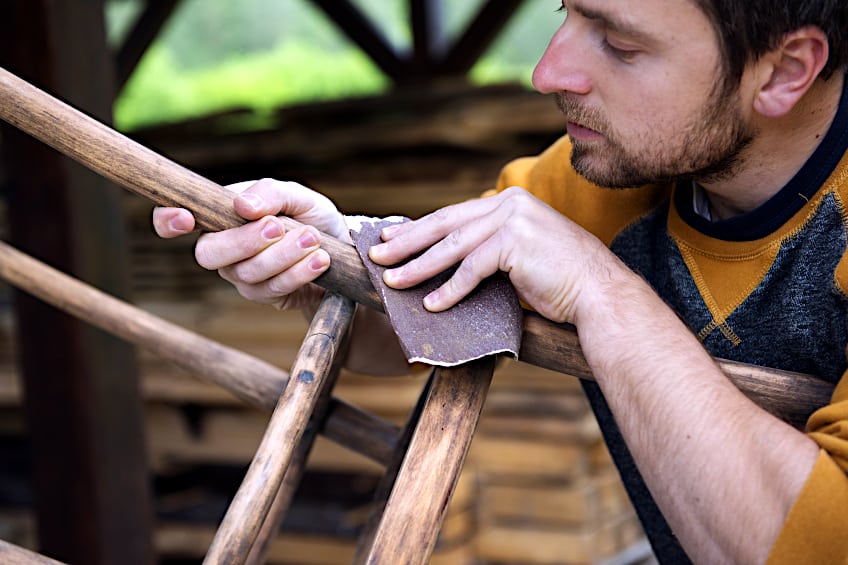
If you feel that sanding is taxing work and too messy, then you can rather use a deglosser. You can apply a deglosser to the varnished wooden surface and use a lint-free cloth, moving in a circular motion, to clean the surface before applying any type of primer. Deglosser is also referred to as liquid sandpaper.
Apply the Primer
Do you need a primer? While it is possible to apply paint without a primer, unless you have chosen to use chalk paint, then we suggest you apply a primer first. A primer will aid the durability of your chosen paint and save you from any other potential problems. In applying an oil-based primer for varnished wood, you will create the following benefits
- Dramatically decrease the number of topcoats required.
- Seal off the wooden surface.
- Increase the level of adhesion of the layers of paint that you apply.
- Block the wood’s grain from showing through your topcoat or sealing.
- Prevents tannins from the knots coming up to the surface.

Before applying any primer, your surface area will need to be completely clean. Once you have a clean surface you can use a paint sprayer, paintbrush, or a roller to apply the primer. The primer needs to be applied evenly and across the entire surface area. Once applied you need to allow sufficient time for the primer to dry – roughly one hour should be sufficient. When the layer is dry you can then apply the second coat. Once the second coat of primer has dried you can take fine-grit sandpaper and gently sand down the whole surface area. Remember to wipe the surface once you have finished sanding, or use a compressor to blow away any fine dust that may get trapped in your paint.
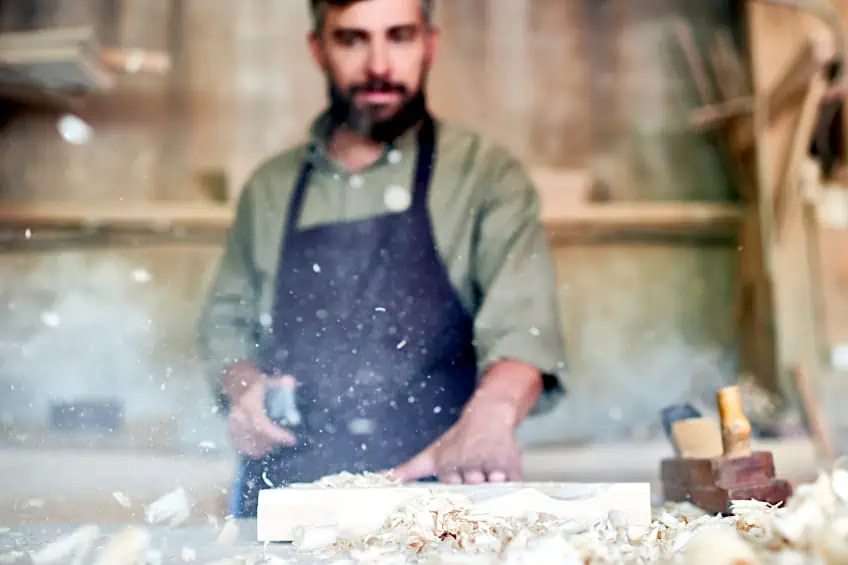
Apply the Paint
Your wooden surface is not ready to apply the paint. You want to ensure that you are working with the right type of paint that is compatible with the varnish and your primer. If you have selected water-based paint, this is a great option as the paint will not have a problem adhering to the surface. Water-based paint does not give off any toxic, harmful odor, and dries significantly faster than oil-based paint. However, remember that if you have selected a water-based paint, you will still have to use an oil-based primer formulated for varnished wood.
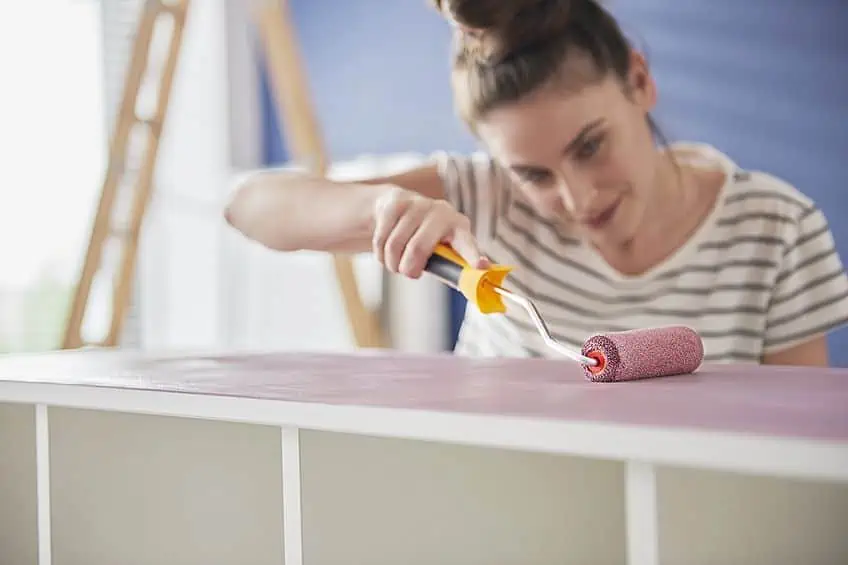
If you have chosen to use oil-based paint, you will achieve a durable surface finish, as well as a more vibrant color. You can use oil-based paint to paint over varnished wood without the need for a primer, but we do recommend you use a primer. Oil-based paint takes quite some time to dry. You will need to leave the paint for roughly eight hours before you will be able to apply the following coat. Oil-based paint is also relatively thick, so we recommend applying it using a paint brush, or diluting it if you really want to use a paint sprayer.
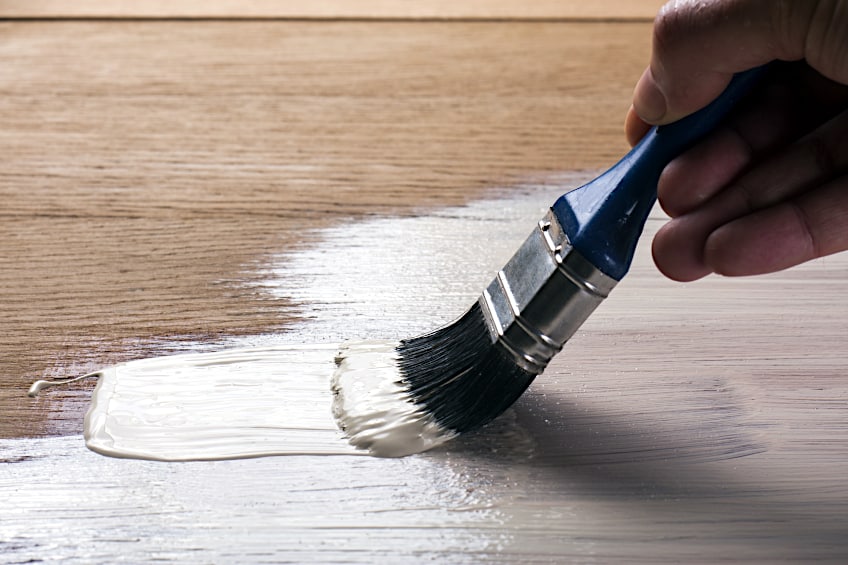
If you decided to use chalk paint, this is a great option as you will not have to apply any form of the primer coat. Chalk paint will be able to hide any types of imperfections on your wooden surface. However, you need to be someone who enjoys a particular finish one will achieve with chalk paint.
The Painting Process
When applying paint over varnished wood, certain tips and tricks can assist you in achieving the ideal finish you are looking for. Before you begin painting, it is a great idea to ensure that your primer has dried completely, in some cases people have recommended that you wait up to a week for the primer to dry, before you begin painting over it.
- When applying the initial layer of paint, ensure you use even and solid strokes to avoid leaving brush marks.
- We recommend you lightly sand down the surface between coats of paint to ensure you achieve a seamless finish.
- When applying the second layer of paint, make sure the whole surface area is covered with paint.
- When working with paint you need to ensure you are wearing the correct protective gear and that your workspace has adequate ventilation.
- Weather conditions can impact the paint’s curing process, so try your best to only work when it is warm and sunny.
- Do not have an open flame or smoke when working with paint.
- Allow a few days for the paint to completely cure before making use of your newly painted wooden surface.
Painting Over Varnished Wood Without Sanding
Painting over varnished wood is normally used when the condition of the wooden surface and the varnish is in fairly good condition. You will need to follow the preliminary process which we have outlined above. A liquid sander or deglosser should be used instead of sanding.

Deglosser Application Process
The deglosser should be applied over the whole surface of the varnished wood, using a paintbrush, cloth, or sprayer, and allow time for it to be able to penetrate the wood’s surface for roughly 15 to 20 minutes. The deglosser can be removed from the surface using a clean cloth. When you are finished, you can follow the same process as mentioned above for priming and painting.
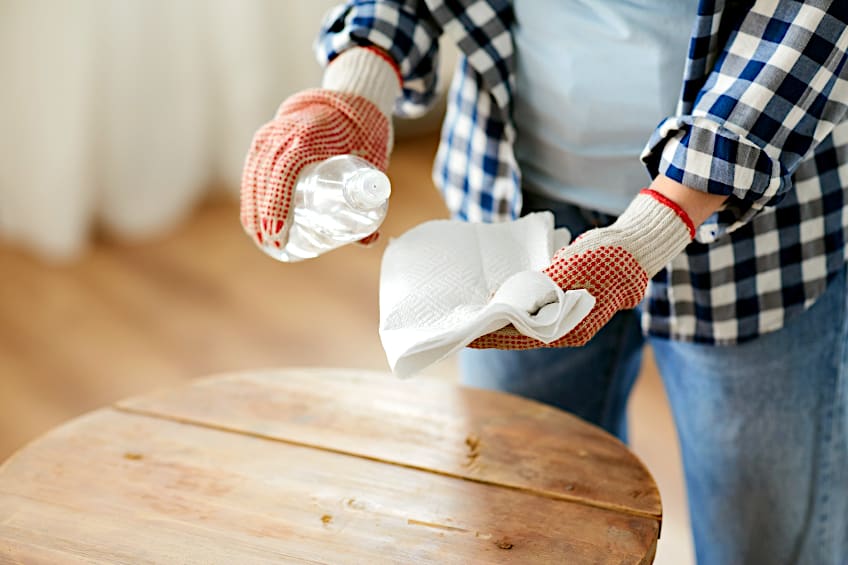
Benefits of Applying Deglosser
The main reason why a deglosser is better than sanding down the surface is that it saves you a significant amount of money and time, as one bottle or aerolized spray can goes a long way. Deglosser will also save you effort and energy and is a lot easier to use as it fills all the nooks and crannies that you would not be able to reach when using sandpaper.
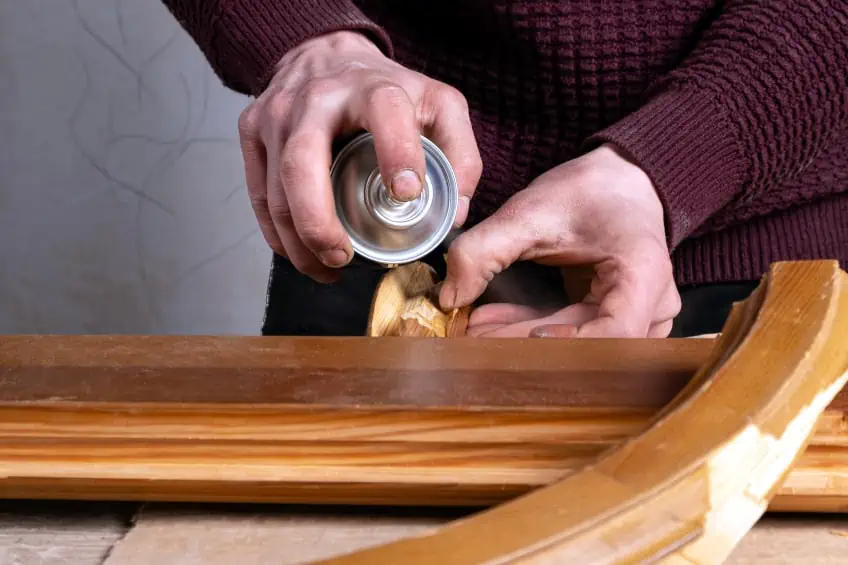
Places Where You Can Use Deglosser
Deglosser is a great option to use on household cabinetry, and furniture. Where there is substantial wear and tear like doors, trimmings, and moldings, deglosser is the ideal choice, and will also work well on any piece of furniture you are looking to refurbish.
Painting Over Varnished Wood Without Sanding or Priming
The process of painting over varnished wood can be used when your varnished wood surface’s condition has been looked after correctly and it is free from scratches, gouges, or marks. To begin with wash down the wooden surface, make sure any grim or dirt has been removed, and allow the surface sufficient time for it to dry.
If you do not want to sand down the surface or apply any primer, then the best paint to use is chalk paint. You can apply chalk paint directly over the varnished wood surface without having to apply any primer, or sand down the surface. It is the perfect choice for this purpose as it offers amazing adhesion to practically any surface. Once you have applied the initial coat and allowed time for it to dry, you can then apply the subsequent coats.
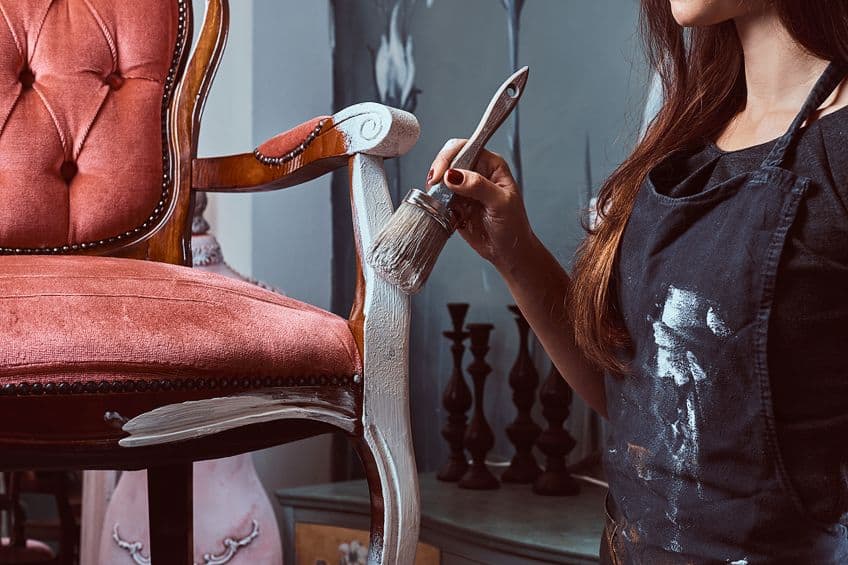
Chalk paint is a wonderful option, thanks to its longevity. However, it is necessary to apply a sealant or topcoat to protect the paint’s surface. You can use varnish, acrylic sealer, or wax to protect the paint. Using chalk paint to cover varnished wood is quite popular, but remember that chalk paint must ideally be sealed with something like wax to prevent a chalky residue.
Now you know that you can paint over varnished wood, you can tackle updating your wooden furniture. Always remember that different types of paint available can be used, and with each of them there are different processes you need to follow. Keep in mind that it will take patience and effort to ensure a perfectly restored wood surface or furniture you desire.
Frequently Asked Questions
Will Paint Stick to a Varnished Surface?
If you adhere to the steps advised in this article then the paint will stick to the varnished wood surface. You will need to prepare the wood, sand down the surface, apply the prime, apply your chosen paint, and apply a sealant.
Can You Paint Over Varnished Trim Using a Two-In-One Primer and Paint?
You can try to, but we do not recommend that you do, as the primer and paint in one is not an actual sealer. While the paint has a thicker consistency, it will not assist in helping to seal the varnished wood surface. You will need to seal the surface with an oil-based primer for varnished wood and once it has dried, you can then apply the topcoat of paint.
What Is the Purpose of a Deglosser?
Deglosser (also known as liquid sandpaper) can be utilized as an alternative to sanding the wood surface with sandpaper. This will save you a significant amount of time, money, and effort and is perfect for large wood surfaces or where there are many nooks and crannies to fill. First, ensure that it will not damage the wood in any way.
Can You Paint Over Varnish?
Yes, you can, but make sure you are using the correct type of paint (either oil-based or water-based paint will work). However, you will need to begin by sanding down the surface and then applying a primer to ensure durable results.
Is Painting Over Varnished Wood Without Sanding Possible?
Yes, you can, as long as you are using oil-based paint. If you have chosen to use chalk paint, there is no need to apply a primer; however, for any other paint type you should apply a primer to aid durability.

I have been into woodworking since 2005 and woodturning since 2011. Because of my love for wood and woodworking, I started woodhappen.com to teach other enthusiasts about how to finish and seal wood, the best woodworking tools, the different types of wood, and everything else related to woodworking! Read more about me here.

